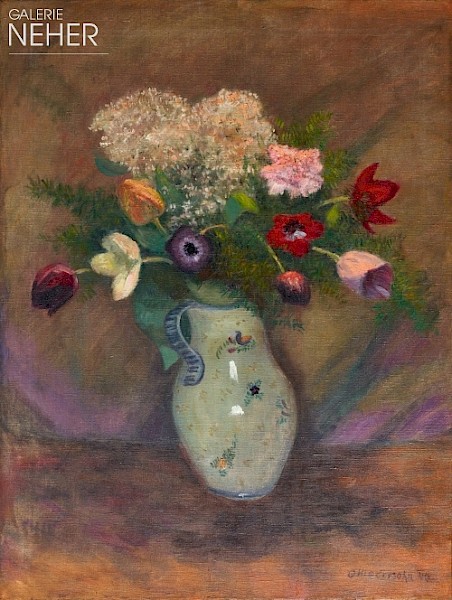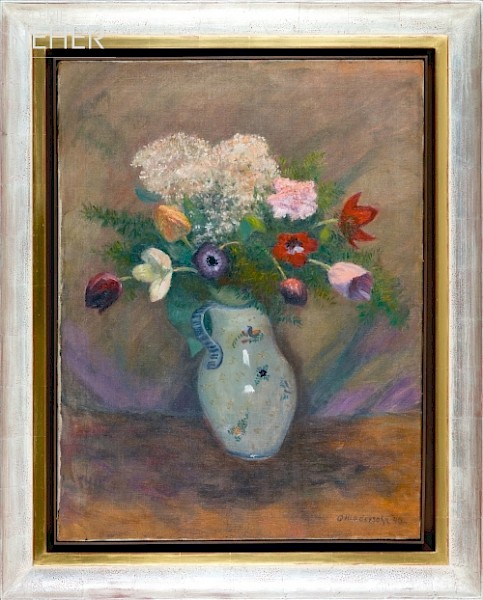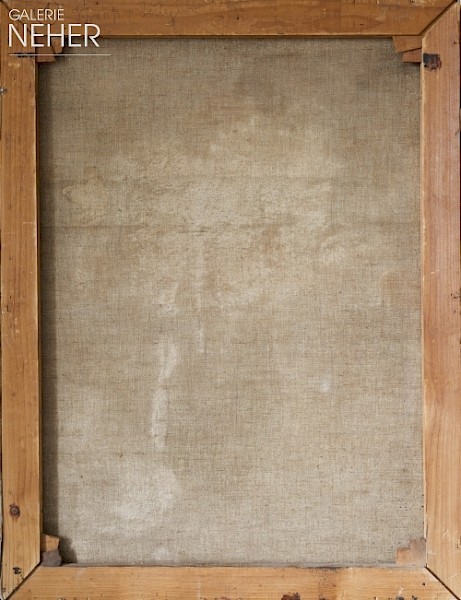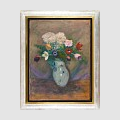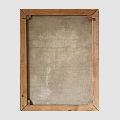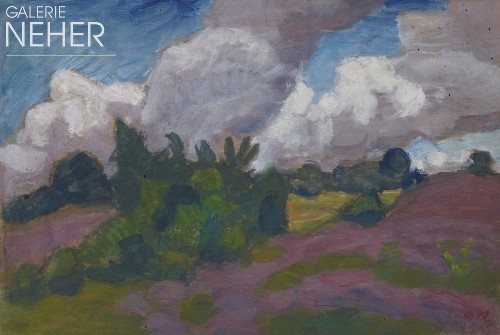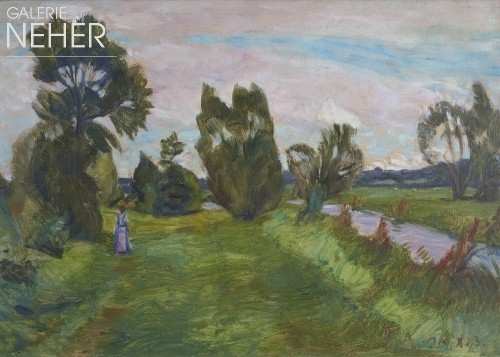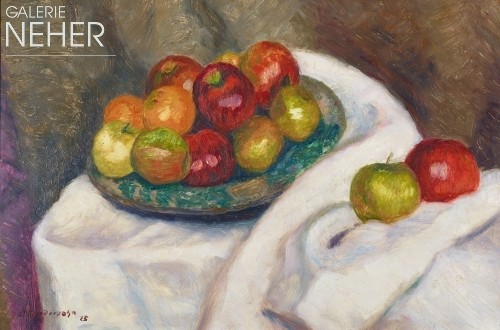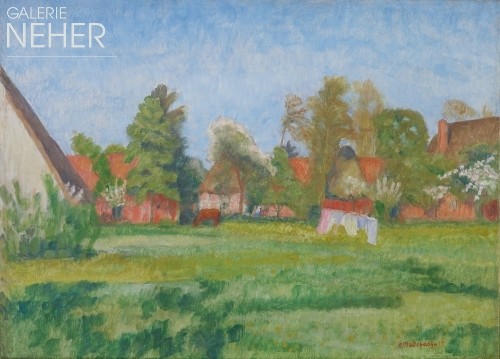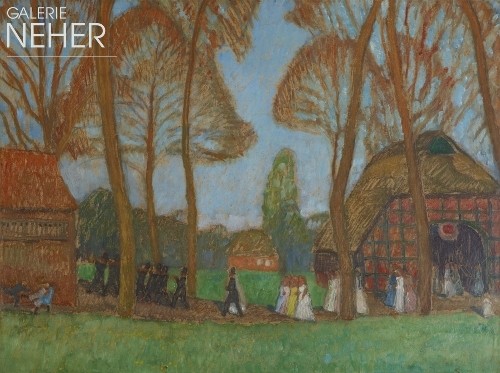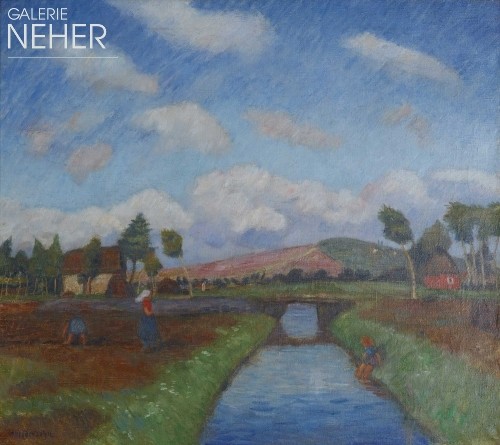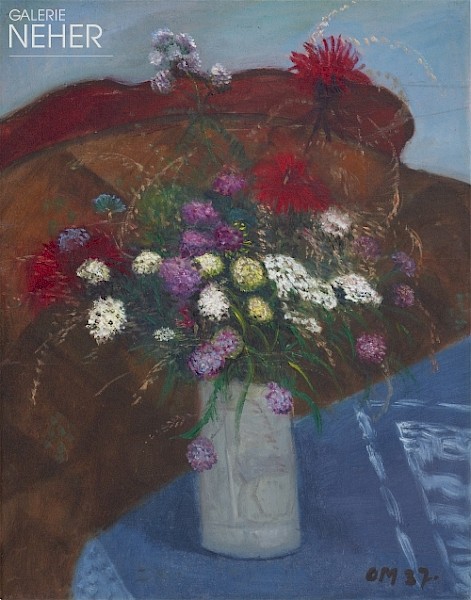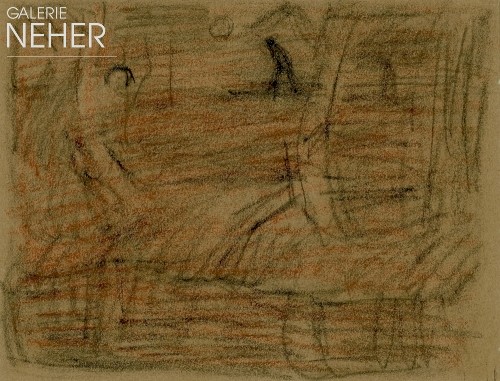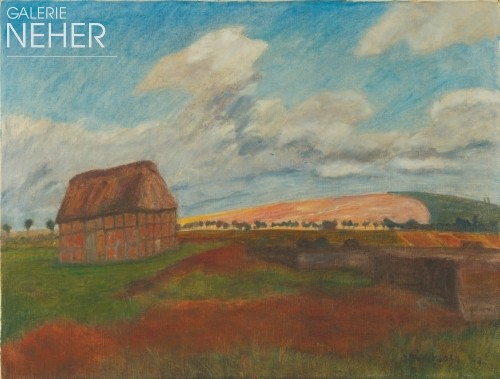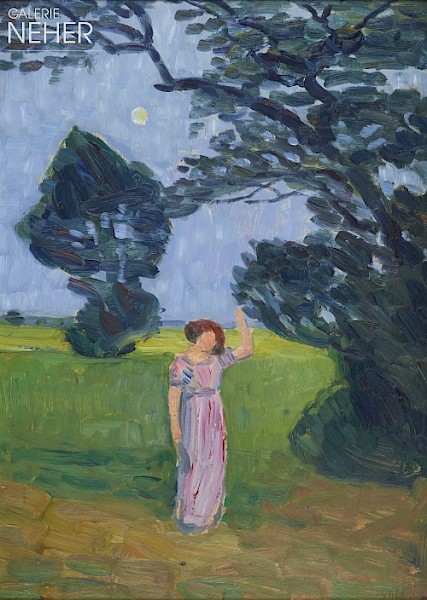About the work
Otto Modersohn painted this exquisite floral still life, featuring tulips, carnations and guelder roses, in 1940, three years before his death. In the previous summer, the artist had withdrawn into his Fischerhuder refuge, after blindness in his right eye had made further trips to the Gailenberg, in the Bavarian Hindelang region, and further afield impossible. The Worpsweder period, on which his fame as a landscape painter was founded, lay many years behind him, and life, following the rise to power of the National Socialists, proved to be arduous – even in the remote lowlands of the River Wümme. The final years of Modersohn's life were characterised by anxiety and travails, seclusion and loneliness, but also by intensive and productive artistic activity. During this period he created – exclusively in his studio – atmospheric and intimate late works as the culmination of his painterly oeuvre.
With their colouristic reduction, executed with consummate artistry and finesse, these works attest to a new sensibility for colour. During this period, depicting the "surmised" or " intimated" is his principal endeavour and his art is characterised by understatement. Floral still lifes – inspired by the diversity and chromatic intensity of the Alpine flora – had become a feature of his work since 1993: Spring and meadow flowers, in many cases autumnal bouquets, sometimes completed in the evening twilight, and arranged in vases, glasses and pitchers against a tranquil background. “They are becoming ever richer, fantastic, mysterious”, noted the artist enthusiastically in November 1933, “such a bouquet is a world full of wonder, more fantastic than nature outside, a fairytale realm, a kingdom of elves. I also like to paint under electric lighting […] With simple colours, broken, indifferent, mild, muted, delicate, subtle, not garish, uniform, dominant, a harmony – devoid of effects […]”. The Strauß mit Tulpen, Anemonen, Nelken und Schneebällen (Bouquet with Tulips, Anemones, Carnations and Guelder Roses) is the mature expression of his creative ambition – a successful arrangement of spring flowers in an attractive porcelain vase, bearing blossom and bird motifs against a delicately nuanced background, rendered with light, thin brush strokes. “The thing-in-itself should speak”, wrote Otto Modersohn, “the object as such, the individual flowers, naturally in unison and thus everywhere.”
Text authored and provided by Dr. Doris Hansmann, Art historian
Studies of art history, theater, film and television, English and Romance Languages at the University of Cologne, doctorated in 1994. Research assistant at the Art Museum Düsseldorf. Lecturer and project manager at Wienand Verlag, Cologne. Freelance work as an author, editor and book producer for publishers and museums in Germany and abroad. From 2011 chief editor at Wienand Verlag, from 2019 to 2021 senior editor at DCV, Dr. Cantz’sche Verlagsgesellschaft, Berlin. Numerous publications on the art of the 20th and 21st centuries.
